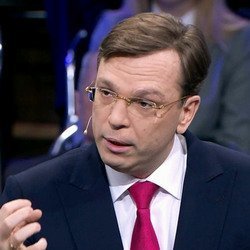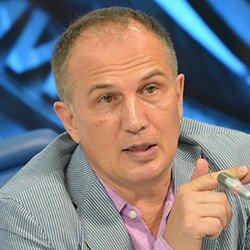Why it is necessary to change the method of counting the poor in Russia
Experts believe that the calculation should be based not on incomes but on expenses of Russians
Russian economists and political experts do not believe in the positive poverty dynamics pronounced by Deputy Prime Minister Tatyana Golikova, who reported a decrease in the number of citizens living below the poverty line by 400,000 people. The very method of counting the poor has been a subject of long-standing debate. The Russian government uses the incomes below the subsistence level as the basis, and the Pension Fund is going to automatically calculate using SNILS (individual insurance account number). Meanwhile, experts call for keeping records of the neediest basing on not income, which does not always reflect the real picture, but on expenses. Especially given the other data from Golikova that the expenses of Russians are exceeding the revenues by 13,3 trillion. Read more in the material of Realnoe Vremya.
Poor Russians have become less by 400k
Fighting poverty is one of the tasks in the president's address. According to the latest data, there were 19 million poor people in the country, or 13,3%. However, earlier Tatiana Golikova reported that their number has decreased:
“The number of poor, with incomes below the subsistence minimum, has decreased by 400 thousand people, now it is 12,9%.”
At the same time, in some regions, she said, this figure remains high, due to the high level of unemployment. It concerns the Republic of Tuva (40,5%), Kabardino-Balkaria and Ingushetia. What is more, the most socially vulnerable category of the population is large families. They account for 51% of those living below the poverty line. According to Golikova, various forms of support for the poor and economic growth will help to solve the problem.
Incomes are taken as the basis for the calculation of the neediest. Soon, they are planning to launch a technology that will automatically identify Russians living below the poverty line. These plans were announced by Chairman of the Pension Fund Anton Drozdov. The new software solution will be tested in the regions participating in the pilot project to combat poverty, including Tatarstan. If the experiment is successful, it will be implemented throughout the country. What kind of technology the Pension Fund offers is not reported, but Head of the Federation Council Committee on Social Policy Valery Ryazansky said that they were talking about SNILS: “Anton Drozdov has no other way of accounting data than using registered SNILS.” The parliamentarian considers these data useful information not only for the ministry of labour and the pension fund but also for other departments.
“If we use SNILS for calculation, then, perhaps, half the population would be poor”
However, all of these methods of counting the poor raise serious doubts among experts. Most remind that incomes do not always reflect the real picture of the well-being of Russians. The experiment of identifying the poor with the help of SNILS is questioned even more.

Besides, the interlocutor of Realnoe Vremya noted that poverty has decreased only according to Golikova's calculations, but according to Rosstat, the real incomes of Russians are decreasing, and the number of poor, on the contrary, has increased. “We should decide once and for all, take the only criterion and discuss it. As for the dynamics — we do not know it. I saw this dynamics of Mishustin (Mikhail Mishustin, head of the Federal Tax Service — editor’s note), he has it on the computer. All cash registers, receipts are kept today on the computer. Without such a device, one can work at the level of selling a bunch of radishes. And these data are not used because they do not get round to such a simple model. The result may be not very terrifying,” the expert, in particular, cited the example of another Golikova’s statement that the expenses of Russians exceed their revenues by 13,3 trillion rubles.
“Even the rich began to cry”
It is necessary to take the issue of methodology as a basis, how to define the poor, the Konstantin Kalachev, a political expert, the head of Political Expert Group, adds:

Another important criterion that allows us to assess the well-being of the society, he said, is to judge the life of Russians not by the quality of life of an individual citizen, but by the environment. “Now I am near VDNKh, it's beautiful, a lot of money has been invested, the pavilions have been restored, the flowers are blooming. But cafes empty. That is, the purchasing power of people has fallen, real incomes have gone down. Maybe because of the very grey part, which has not been taken into account,” said Kalachev.
The poverty eradication programme is stated in the order of ministry of labour of Russia No. 748, which Minister of Labour and Social Protection Maksim Topilin signed on November 30 last year. It was formed immediately after Vladimir Putin set the Russian government the task of reducing poverty twice by 2024. The pilot project has been launched in a number of regions, including Tatarstan, which is running a new programme. The project, in particular, provides for the introduction of social contracts for low-paid work for those who live on unemployment benefits. Currently, 7,7% of citizens officially live below the poverty line or below the subsistence level in Tatarstan.